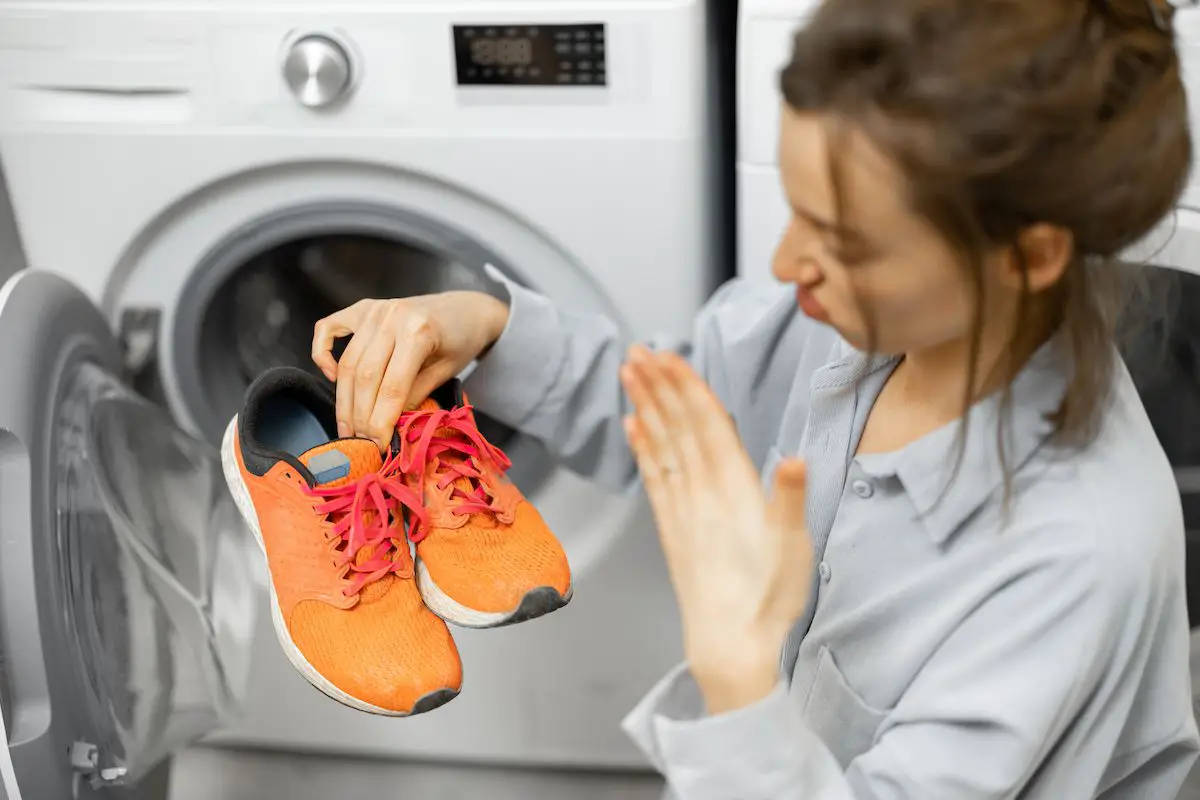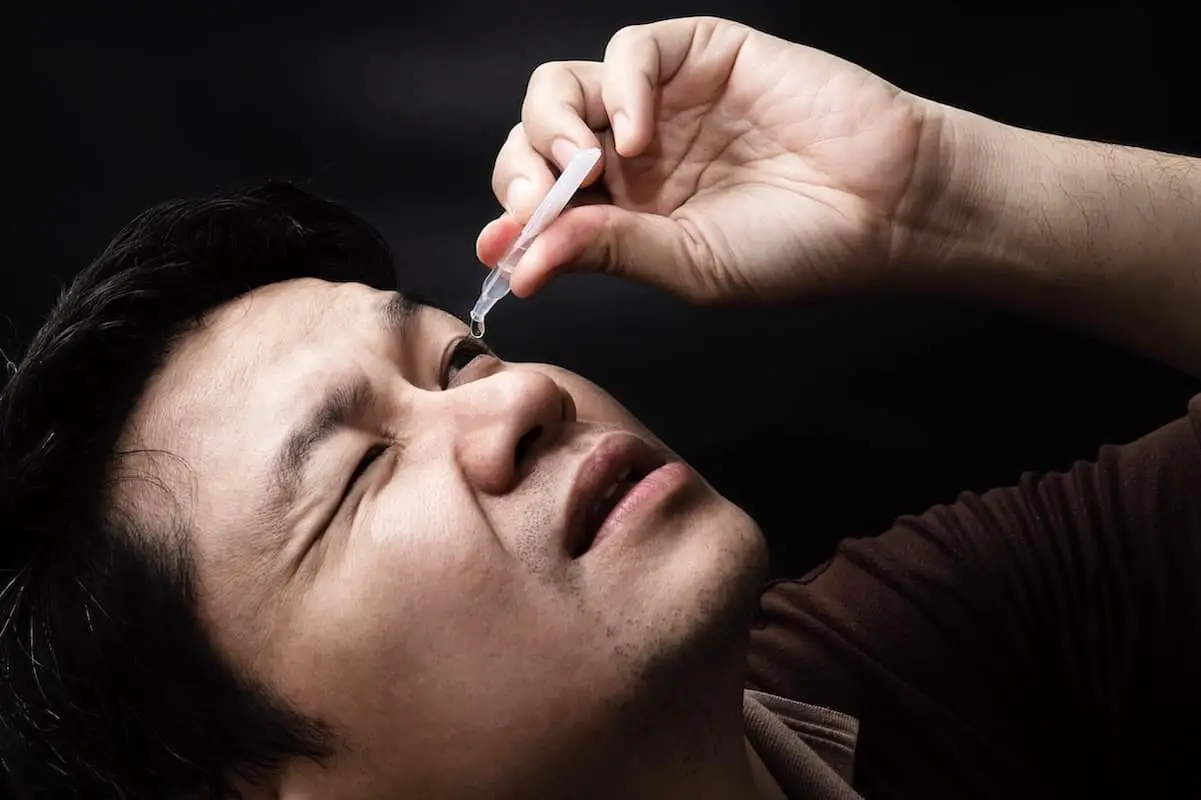Can Shoes Be Washed in a Washing Machine? [Full Guide!]
As a fitness freak, I love wearing my sneakers for a jog almost every other day. But, one of the biggest problems that I have faced in the past is washing the shoe and getting rid of the smell from the shoe! I dislike the tough process of washing the shoes by hand and, in the past, I’ve often found myself asking – can shoes be washed in the washing machine?
Yes, shoes can indeed be laundered in a washing machine. However, it’s imperative to ascertain the material of your footwear, as delicate materials like leather are not machine-washable.
After multiple attempts at washing my shoes in the washing machine, I’ve finally figured the exact process of doing it the right way! So, in this article, I’ll share with you everything I’ve learned about washing shoes in the washing machine, some pro tips for shoe care, perfect setting for your washing machine when washing your shoes, and much more!
So, let’s dive in!
Is It Safe to Wash Shoes in the Washing Machine?

Let’s get straight to the key point – how safe are your hoes if you wash them in the washing machine? Let’s understand the details:
The Effect on the Shoes
Washing shoes in the machine can seem like the most convenient solution for dirty footwear. But is it safe for the shoes? The answer largely depends on the type of shoes you’re dealing with. Canvas and athletic shoes are generally safe to wash in the machine, but leather, suede, and shoes with ornate details should be kept away from the machine.
When machine-washed, shoes undergo a rigorous process that includes spinning, tumbling, and exposure to water and detergent. This process can cause deformation, discoloration, and a diminution of the adhesive properties that hold the shoe together. Also, the heat from the water can warp the shape of the shoes and cause shrinkage.
The Effect on the Washing Machine
While it’s essential to consider the impact on the shoes, one must also ponder about the effect on the washing machine. Shoes, especially if they have heavy soles or metal details, can cause damage to the drum of the washing machine. They can also create an uneven load, which can lead to increased wear and tear on the machine.
The debris and dirt from the shoes can clog the drain over time, leading to potential malfunctions. Furthermore, the noise produced by shoes tumbling in the machine can be rather disruptive.
Risks and Benefits
There are specific risks associated with washing shoes in the machine. As mentioned earlier, it may cause physical damage to the shoes and the washing machine. Additionally, the process can lead to color bleeding, particularly if you have shoes with vibrant or dark colors.
On the other hand, washing shoes in the machine can have its benefits. It’s a quick and easy method to clean shoes, saving you time and effort. It can effectively remove dirt, stains, and odors, providing a deeper clean than hand-washing. This method is especially handy for those who engage in activities that frequently soil their shoes, such as running or hiking.
Overall, whether it’s safe to wash shoes in the washing machine depends on the type of shoes and the specific circumstances. It’s crucial to weigh the risks and benefits and make an informed decision. If you decide to proceed, it’s recommended to use a gentle cycle, cold water, and place the shoes in a mesh laundry bag for protection.
Types of Shoes and Their Washing Machine Compatibility
Perhaps you may be aware that not all shoes can go into the washing machine. Thus, you need to first ascertain whether your shoes are compatible to be washed in the washing machine:!
1. Canvas Shoes
As a staple in casual footwear, canvas shoes are ubiquitous. They are typically made from cotton, which can withstand the agitation of a washing machine. However, they should be placed in a mesh laundry bag or pillowcase to prevent abrasion against the drum. Also, it’s advisable to remove any insoles or laces before machine washing. Keep in mind that canvas shoes should be air-dried, not tumble-dried, to maintain their shape and avoid shrinkage. Overall, canvas shoes are fairly washing machine compatible.
2. Athletic Shoes
Athletic shoes, or sneakers, can be a bit tricky when it comes to washing machine compatibility. They are typically made from a mix of materials, including synthetics and rubber, which can be damaged by the vigorous action of a washing machine. However, certain models can be machine washed on a gentle cycle with cold water. Similar to canvas shoes, it’s recommended to remove insoles and laces, and to use a mesh bag for protection. Air drying is the recommended method for these shoes as well.
3. Leather Shoes
Leather shoes are a definitive no when it comes to washing machine compatibility. The machine’s agitation and water can warp the leather, resulting in permanent damage. Instead, leather shoes should be cleaned with a specialized leather cleaner and conditioner. These products help maintain the material’s suppleness, ensuring your leather shoes keep their elegant look and feel.
4. Suede Shoes
Similarly to leather, suede shoes should never be placed in a washing machine. The water and agitation can cause the suede to lose its soft, velvety texture. Instead, use a suede eraser or brush to remove dirt and stains, and a specialized suede protector to guard against future soiling. For stubborn stains, it’s advisable to consult a professional cleaner who specializes in suede.
5. Synthetic Shoes
Synthetic shoes, made from materials like polyester or nylon, can often withstand a trip through the washing machine. However, it’s important to read the care label beforehand, as not all synthetics are created equal. Some might be more delicate and require hand washing. As with other shoe types, it’s best to remove insoles and laces, use a protective mesh bag, and opt for air drying to ensure the shoes retain their shape.
Overall, while some shoe types are washing machine compatible, others require specialized care to maintain their appearance and durability. Always consult the shoe’s care label or manufacturer’s instructions before deciding on a cleaning method.
Preparations Before Washing Shoes in the Machine
Before plunging your shoes into the washing machine, several preliminary steps are essential to ensure their longevity and preservation. These precautions are not only crucial for the protection of your footwear but also for the smooth operation of your machine.
Checking the Manufacturer’s Instructions
Firstly, it’s imperative to consult the manufacturer’s instructions. Not all shoes are designed to withstand the rigidity of a washing machine cycle. The manufacturer’s label or website usually provide specific cleaning instructions, outlining whether the shoes can be machine washed or if they require a more delicate cleaning method. Ignoring such guidelines may damage the fabric, discolor the shoes, or even distort their shape.
Removing Loose Dirt
Next, any loose dirt or debris should be removed from the shoes. This can be achieved simply by knocking the soles of the shoes together, or for more stubborn dirt, a stiff brush can be handy. The removal of loose dirt prevents it from detaching during the wash and potentially blocking the washing machine’s drain, which could result in a costly repair.
Taking Out Insoles and Laces
Another crucial step is the removal of insoles and laces. Detaching these elements allows for a more thorough clean as it exposes areas of the shoe that would otherwise remain covered. Moreover, insoles and laces generally need a gentler cleaning approach and washing them separately can prolong their lifespan.
Using a Washing Bag
Finally, placing shoes in a washing bag or pillowcase before putting them in the machine is a prudent measure. This protects both the shoes and the washing machine from potential damage. The bag acts as a barrier, reducing the impact of the shoes hitting the drum of the machine during the wash cycle.
Overall, the process of preparing shoes for machine washing requires a meticulous approach. Each step serves a specific purpose, designed to protect both the shoes and the washing machine from unnecessary damage. By adhering to these preparatory measures, you can confidently wash your shoes in the machine, knowing that you are doing so in the safest and most effective manner possible.
Step-by-Step Process to Wash Your Shoes in the Washing Machine
The washing process of shoes in a washing machine is a meticulous task that requires a keen eye for detail and a comprehensive understanding of the machine’s settings. Let’s dissect this process into three main components: setting the right water temperature, choosing the correct washing cycle, and adding the right amount of detergent.
1. Setting the Right Water Temperature
The water temperature is a crucial factor that impacts the integrity and cleanliness of your shoes. Hot water can cause the shoes to shrink or distort their shape, especially if they’re made of materials like leather or suede. Conversely, cold water might not effectively remove dirt and grime. So, what’s the ideal temperature?
The optimal water temperature for washing shoes in a machine is lukewarm – a perfect blend of hot and cold water. This temperature is gentle on the shoe materials, yet effective enough to eliminate dirt and odors. However, always consult the care label on your shoes, as some may require specific temperature settings.
2. Choosing the Correct Washing Cycle
Selecting the appropriate washing cycle is a pivotal step in the washing process. A vigorous cycle might result in damage to the shoes or the washing machine, while a mild cycle might not clean the shoes effectively.
The delicate or hand-wash cycle is often the safest bet for most shoe types. This cycle is gentle and minimizes the risk of damaging the shoes or the washing machine drum. However, for heavily soiled shoes, you might want to opt for a standard cycle, but be sure to consult the shoe’s care label or the manufacturer’s instructions first.
3. Adding the Right Amount of Detergent
The detergent plays a significant role in the cleanliness and longevity of your shoes. Excessive detergent can leave residue on the shoes, while insufficient detergent might not thoroughly clean them.
As a general rule of thumb, use half the amount of detergent you would typically use for a small load of laundry. If your shoes are especially dirty, you might add a little more, but avoid going overboard.
Also, consider using a mild, dye-free, and fragrance-free detergent, as these are less likely to cause discoloration or damage to your shoes.
Overall, washing shoes in a washing machine is a viable option if done correctly. Paying attention to the water temperature, washing cycle, and the amount of detergent can ensure a successful and safe cleaning process. Remember, always refer to the care label or the manufacturer’s instructions before proceeding with the washing.
Drying Your Shoes After a Machine Wash
After removing your shoes from the washing machine, it’s crucial to dry them properly to maintain their shape, longevity, and overall quality. A few methods can be utilized depending on your resources and the amount of time you have at your disposal.
Air Drying
This is the simplest and most cost-effective method of drying shoes. First, remove any excess water from your shoes by gently squeezing them. Be careful not to twist or wring them, as this can deform their shape. Then place them in a well-ventilated area, preferably with a gentle, consistent airflow.
To help maintain their shape while drying, stuff the shoes with newspaper or clean, dry towels. These materials will absorb the excess moisture from inside the shoes, speeding up the drying process.
It’s important to note that air drying requires a considerable amount of time, ranging from a few hours to a couple of days, depending on the shoe material and the weather.
Using a Fan or Heater
If you need to dry your shoes faster, using a fan or heater can be a viable option. Position the shoes in front of the device, ensuring that there is enough space for air circulation. A distance of about a foot should suffice.
However, caution must be taken when employing this method. Using a heater can potentially damage the shoes if the heat is too intense or if they are exposed for an extended period. Always set the heater on a low setting and keep a careful watch to prevent overheating.
Avoiding Direct Sunlight
While it might seem counterintuitive, drying shoes in direct sunlight is not advisable. Prolonged exposure to the sun’s harsh rays can cause the shoe material to fade and even crack, especially if they are made of leather or certain synthetic materials.
Instead, opt for a shaded outdoor area that still allows for adequate air circulation. This will enable your shoes to dry while avoiding the potential harm caused by the sun.
Overall, drying your shoes after a machine wash needs to be done with care and consideration. The method you choose will largely depend on the type of shoes, the materials they are made of, and the time you have available. In all cases, it’s essential to prioritize the longevity and quality of your shoes over the speed of drying.
Alternatives to Washing Shoes in the Machine
While tossing shoes in the washing machine may seem like a quick and easy solution, it’s not always the best method. Not all shoes are machine-washable, and for those that aren’t, other cleaning methods are necessary. Here are some alternatives you can consider.
1. Hand Washing
Hand washing is an effective alternative to machine washing, especially for shoes made of delicate materials. This method allows for a more controlled cleaning process, minimizing potential damage. Here’s how to do it.
First, remove any loose dirt or debris from the shoes. You can do this using a soft brush or cloth. Next, prepare a mild soapy solution by mixing warm water and a gentle detergent. Dip a soft sponge or cloth into the solution and gently clean the shoes, paying special attention to dirty or stained areas. Rinse the soap off with clean water and pat them dry with a towel.
Remember, never to submerge your shoes fully in water; this could damage the insole and other internal components. Always allow your shoes to air dry; using a heater or dryer could warp their shape or fade their color.
2. Using a Shoe Cleaner
Another alternative to machine washing is using a specialized shoe cleaner. These products are designed to effectively clean shoes without causing harm to the material.
To use a shoe cleaner, first, remove any loose dirt or debris from the shoes. Apply the cleaner as directed on the product label, usually using a brush or cloth. After application, allow the cleaner to sit on the shoes for a few minutes to break down the dirt or stains. Finally, wipe off the cleaner with a damp cloth and allow the shoes to air dry.
Shoe cleaners come in various forms, including sprays, foams, and wipes, and are available for different types of shoe materials. Selecting the right cleaner for your shoes is vital to ensure effective cleaning and to prevent possible damage.
3. Professional Cleaning Services
If you’re not confident in washing your shoes yourself or if they require intensive cleaning, you might want to consider professional cleaning services. These services have the expertise and specialized equipment to clean and restore your shoes effectively.
Professional cleaning services can tackle a wide range of shoe materials and styles, from leather boots to suede sneakers. They can also handle more complex cleaning tasks, such as stain removal and odor elimination.
While professional cleaning is typically more expensive than other methods, it can be a worthwhile investment for high-end or valuable shoes.
Overall, whether you choose hand washing, a shoe cleaner, or professional cleaning, the key is to select the method that best suits your shoes’ material and condition. With the right care and maintenance, you can keep your shoes looking their best, extending their lifespan and maximizing their value.

![Can You Wear an Apple Watch on Ankle? [Is It Accurate?]](https://styleuphq.com/wp-content/uploads/2022/03/Man-running-outdoors-1200x799.webp)

![Apple Watch Keeps Locking? [Here’s an EASY Fix!]](https://styleuphq.com/wp-content/uploads/2022/08/seoul-05-02-2022-male-hand-with-apple-watch-clo-2022-03-12-04-16-48-utc-1067x800.webp)

![Is Your Perfume Too Strong? Here’s What to Do! [EASY Guide]](https://styleuphq.com/wp-content/uploads/2021/07/too-happy_t20_lWNBOB-1200x800.jpeg)
